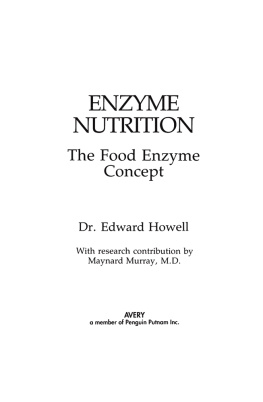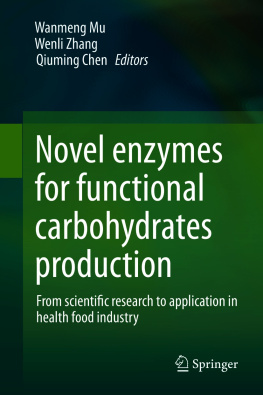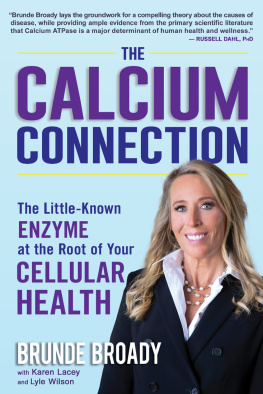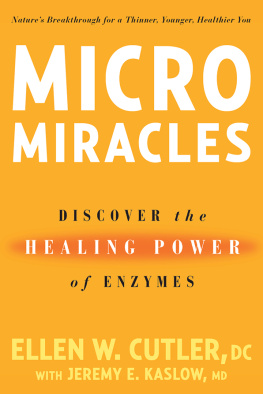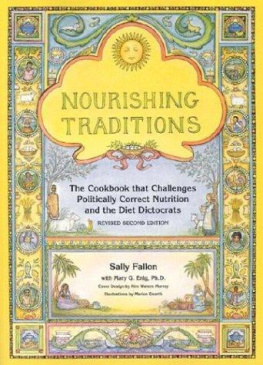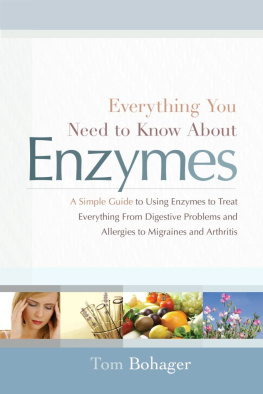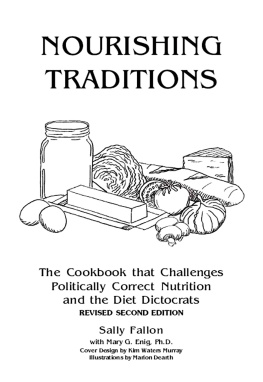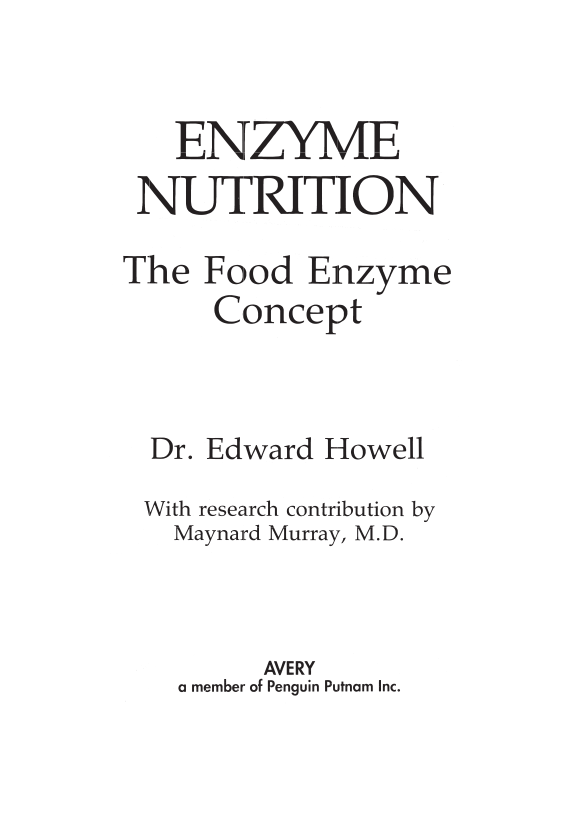The medical and health procedures in this book are based on the training, personal experience, and research of the author. Because each person and situation is unique, the author and publisher urge the reader to check with a qualified health professional before using any procedure where there is any question as to its appropriateness.
The publisher does not advocate the use of any particular diet and exercise program, but believes the information presented in this book should be available to the public.
Because there is always some risk involved, the author and publisher are not responsible for any adverse effects or consequences resulting from the use of any of the suggestions, preparations, or procedures in this book. Please do not use the book if you are unwilling to assume the risk. Feel free to consult a physician or other qualified health professional. It is a sign of wisdom, not cowardice, to seek a second or third opinion.
Cover art by Tim Peterson
Cover design by Rudy Shur
Library of Congress Cataloging-in-Publication Data
Howell, Edward, 1898
Enzyme nutrition.
Includes index.
1. EnzymesTherapeutic use. 2. Nutrition.
1. Murray, Maynard. II. Title. [DNLM: 1. Enzymes. 2. Nutrition. QU 135 H859e]
RM666.E55H68 1985 616.854 8511222
ISBN 978-1-101-66252-6
Copyright 1985 by Edward Howell
All rights reserved. No part of this publication may be reproduced, stored in a retrieval system, or transmitted, in any form or by any means, electronic, mechanical, photocopying, recording, or otherwise, without the prior written permission of the copyright owner.
Foreword
As a researcher, reporter, and author of over twenty books on nutrition, health, and related subjects, I feel privileged to be able to introduce the concept of food enzymes to you as presented by Dr. Edward Howell in this book. Here is how my own introduction to this excellent work occurred. I read an interview of Dr. Howell on the subject of Food Enzymes in the Healthview Newsletter, published in Charlottesville, Virginia. This interview was so impressive, I asked for permission from the editors of the newsletter to write an article about Dr. Howell and enzymes in Lets LIVE magazine, of which I am a contributing editor. After receiving permission, I wrote the article for the June 1977 issue of Lets LIVE. The response of the public to this information, which stated how enzymes could aid health and prolong life, was so strong that the magazine editors stated that this article has drawn more comment from the readers than perhaps any article in Lets LIVE history. This is due, I am sure, to the helpful potential of the use of enzymes in the daily diet, as explained by Dr. Howell in this book, Enzyme Nutrition. More recently, due to many requests of old and newer subscribers who had heard about the enzyme information, this article was repeated in the August 1980 issue of Lets LIVE. At the time of the writing of the June 1977 article, the only source of the information appeared in the Healthview Newsletter and the Lets LIVE magazine. At that time, suggestions were given that Dr. Howell was at work on a complete book on the subject. Many scientists and doctors wrote me asking for information, as well as for the address of Dr. Howell, who had not yet finished the book. This book is now finished, and the full story of how enzymes can help human (as well as animal) health is at last revealed.
This information is a new addition to the history of nutrition and the betterment of health, now available to scientists, doctors, and you, the general public.
Linda Clark, M.A.
Introduction
In the early 1900s, Casimar Funk discovered the vital importance of vitamins in human nutrition and health. Some years later, researchers looked at the then unknown role of minerals and trace elements in health. Again, the nutritional picture took on a new dimension. This book is an attempt to bring into the light the most important nutritional discovery since vitamins, minerals, and trace elements, and perhaps the only solution to our present health crisisfood enzymes. The study of food enzymes in nutrition and human health has been a sore eye to both scientists and nutritionists alike. For enzymes operate on both chemical and biological levels, and science cannot measure or synthesize their biological or life energy.
This biological force is the very core of every enzyme. Various names such as life energy, life force, life principle, vitality, vital force, strength, and nerve energy have been offered to describe this energy. Without the life energy of enzymes we would be nothing more than a pile of lifeless chemical substancesvitamins, minerals, water, and proteins. In both maintaining health and in healing, enzymes and only enzymes do the actual work. They are what we call in metabolism, the bodys labor force.
Enzyme Nutrition points out that each one of us is given a limited supply of bodily enzyme energy at birth. This supply, like the energy supply in your new battery, has to last a lifetime. The faster you use up your enzyme supply, the shorter your life. A great deal of our enzyme energy is wasted haphazardly throughout life. The habit of cooking our food and eating it processed with chemicals; and the use of alcohol, drugs, and junk food all draw out tremendous quantities of enzymes from our limited supply. Frequent colds and fevers and exposure to extremes of temperature also deplete the supply. A body in such a weakened, enzyme-deficient state is a prime target for cancer, obesity, heart disease, or other degenerative problems. A lifetime of such abuse often ends in the tragedy of death at middle age.
The purpose of this book is to educate scientists, health activists, and lay persons about the enzyme theories that Dr. Howell calls the Food Enzyme Concept. Along with his book The Status of Food Enzymes in Digestion and Metabolism, it is the first significant scientific attempt to prove the necessity of raw foods in human nutrition. In it he tells us what enzymes are, how they keep us alive, and the consequences of the present enzyme-deficient diet. In a highly readable and entertaining style, Dr. Howell exposes the crippled attempts of modern medicine to heal disease and its failure to attack the root of the problem. His conclusion is that many, if not all, degenerative diseases that humans suffer and die from are caused by the excessive use of enzyme-deficient cooked and processed foods. With all the billions of dollars spent on university and private research, it seems amazing that the cause of our current health crisis could be so clear-cut and simple. Yet the scientist or lay person who reads this book must respect the conclusions of Dr. Howell and the hundreds of contributing researchers as a significant contribution to the fields of human nutrition, degenerative disease, and aging.
In , the book gives an overview of the Food Enzyme Concept. This is followed by a discussion of the elusive life principle in enzymes and what Dr. Howell refers to as the enzyme bank account or potential. Each of us is given a limited supply of enzyme energy at birth that must last us a lifetime. Key to his theory that man could live longer and be healthier by guarding against loss of his precious enzymes is the example of wild animals in nature, who statistically outlive man and die of only a handful of natural causes. Howell goes on to show that bodily enzyme depletion and aging go hand in hand in both laboratory animals and humans.

